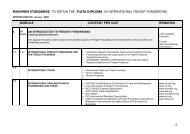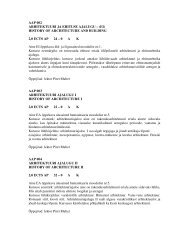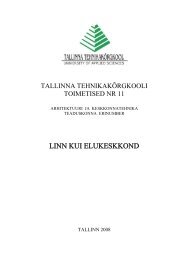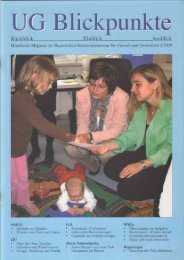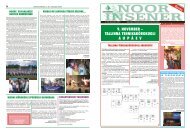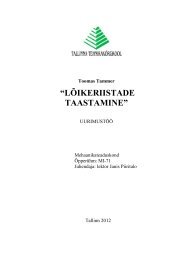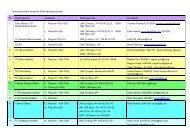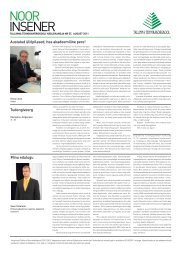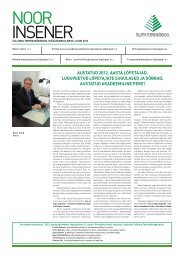TEACHER KNOWLEDGE OF STUDENTS' MATHEMATICAL ERRORS
TEACHER KNOWLEDGE OF STUDENTS' MATHEMATICAL ERRORS
TEACHER KNOWLEDGE OF STUDENTS' MATHEMATICAL ERRORS
You also want an ePaper? Increase the reach of your titles
YUMPU automatically turns print PDFs into web optimized ePapers that Google loves.
mathematical errors, the first regularity refers to certain errors made by different<br />
students that are extremely common, and the second kind of regularity refers to the<br />
wrong answers given by one person, in response to a sequence of questions.<br />
Brousseau (1981) used historical elements in order to explain pupils’ errors in<br />
decimal factions, and he found that pupils make the same errors independently of the<br />
teaching methods used and, thus, concluded that there are errors that can be attributed<br />
to the pupils’ epistemological foundations. And there is the widely recognized<br />
conceptual change framework, within which errors initially conceptualized<br />
negatively are now seen as a natural stage in knowledge construction and thus<br />
inevitable (Vosniadow & Verschaffel, 2004)<br />
At the same time, in the past two decades, there has been a significant and developing<br />
research focus on teacher knowledge since Shulman (1986) introduced the notion of<br />
‘pedagogical content knowledge’ (PCK), which emphasized knowledge of students’<br />
thinking about particular topic, typical difficulties that students have, and<br />
representations that make mathematical ideas accessible to students. Research on<br />
teacher knowledge has expanded from studies of teachers’ subject-matter knowledge<br />
of various content areas to the organization of teachers’ knowledge for teaching<br />
particular content to students (Ball, 1990; Even, 1993; Peng, 2007; Izsak, 2008). This<br />
expansion follows a generation of research that emphasizes knowledge of content and<br />
students, include the ability to anticipate student errors, to interpret incomplete<br />
student thinking, to predict how students will handle specific tasks, and what students<br />
will find interesting and challenging. In this aspect, Hill et al. (2008) identified that<br />
responding to students inappropriately—the degree to which teacher either<br />
misinterprets or, in the case of student misunderstanding, fails to respond to student<br />
utterance as a key aspect of the mathematical quality of instruction. Peng and Luo<br />
(2009) developed a framework to investigate mathematics teacher knowledge as used<br />
in error analysis.<br />
From the literatures, it can be observed that there are insights from studies in both<br />
analysing students’ mathematical errors and mathematics teacher knowledge, but it<br />
lacks of how mathematics teachers are knowledgeable of students’ mathematical<br />
errors, especially absence of empirical evidences. This study aims to fill this gap<br />
within the existed framework.<br />
THEORETICAL FRAMEWORK<br />
In Peng and Luo (2009), the framework below (shown in Table 1) is introduced in<br />
order to analysis teacher knowledge of students’ mathematical errors. The framework<br />
includes two separate dimensions, namely, the nature of mathematical error and the<br />
phrases of error analysis, which are closely linked together in a complex way. There<br />
are four keys for the nature of mathematical error, namely, mathematical, logical,<br />
strategical and psychological, and the four keys for the phrases of error analysis,<br />
namely, identify, interpret, evaluate, and remediate.<br />
1- 2



